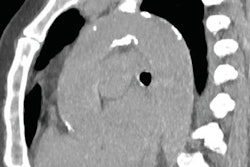Four interventional radiology organizations have endorsed the use of emergency mechanical thrombectomy to hasten treatment for patients who experience stroke.
Emergency mechanical thrombectomy is designed to remove blood clots in the brain with a stent. The technique has shown it can increase chances for a full recovery.
The guidelines for emergency mechanical thrombectomy come from the Royal College of Radiologists (RCR), the British Society of Interventional Radiology (BSIR), the British Society of Neuroradiologists (BSNR), and the UK Neurointerventional Group (UKNG). National Health Service (NHS) England also plans to help hospitals train more specialists and radiologists to perform the treatment because there are not enough skilled physicians to handle the procedure.
There are currently only 74 interventional radiologists in England who are trained in the procedure. This initiative would require at least 120 trained physicians, according to NHS England, with additional personnel needed to fill voids across the U.K.
"Sadly, the NHS does not have the infrastructure and manpower to deliver this groundbreaking treatment," said Dr. Jai Patel, chair of the RCR interventional radiology committee. "However, this collaboration between stroke thrombectomy experts and our practical guidance for doctors and hospitals is a great first step to making sure we have the skilled workforce we need so that more stroke victims can benefit."



















